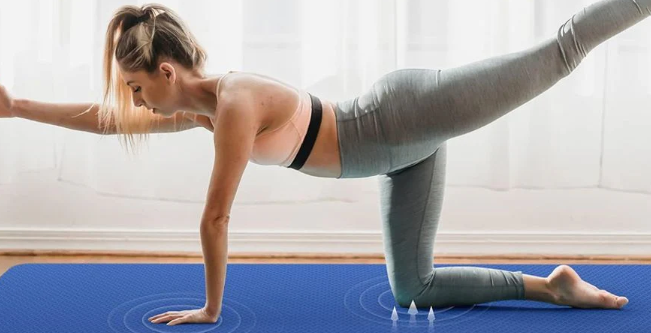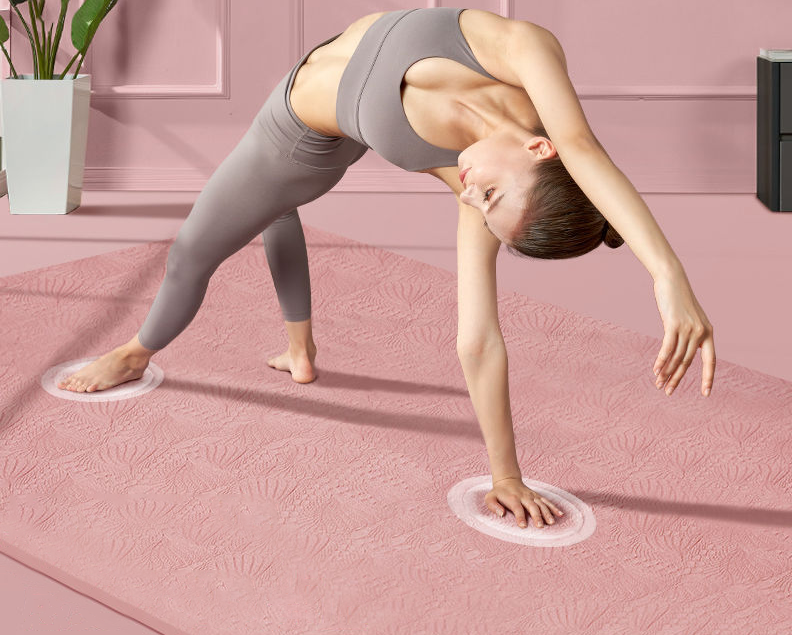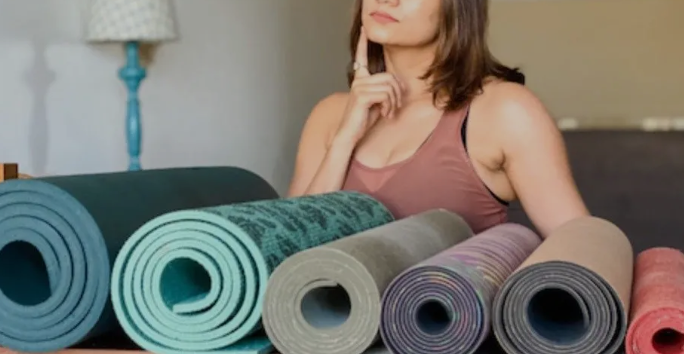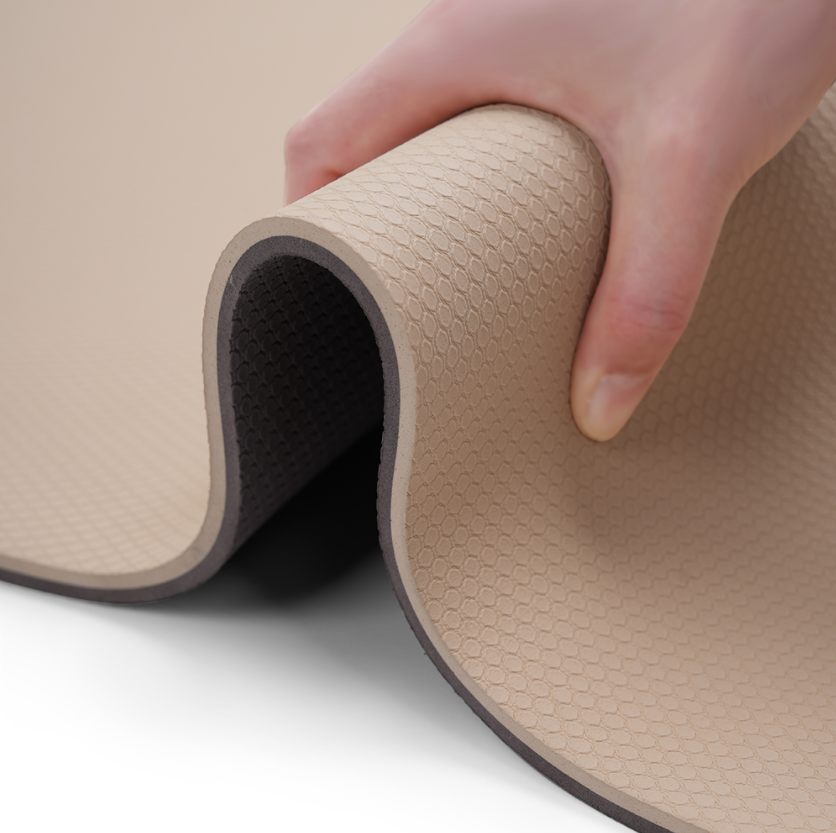Finding the right non-slip yoga mats wholesale can change your studio or gym’s practice experience. It also protects your bottom line. Are you outfitting a new yoga studio? Maybe you’re refreshing your gym’s equipment or stocking a retail space. Either way, your yoga mat quality impacts customer satisfaction and safety.

Why Non-Slip Features Matter for Your Business
Non-slip yoga mats aren’t just a preference. They’re essential safety equipment. Studios and gyms face real liability concerns. This happens when practitioners slip during poses. A quality non-slip surface provides:
-
Enhanced stability during balance poses and transitions
-
Injury prevention by reducing falls and muscle strain
-
Customer confidence so practitioners focus on their practice, not their footing
-
Professional reputation because clients link quality mats with quality establishments
The Wholesale Advantage: Quality Meets Savings
Buying non-slip yoga mats wholesale delivers clear benefits. Individual mat purchases cannot match these advantages:
Cost Efficiency: Wholesale pricing cuts per-mat costs by 30-50% compared to retail purchases. Does your studio need 50 mats? You could save hundreds or thousands of dollars. I recommend using that capital for marketing, instructor training, or facility improvements.
Consistency: Buying in bulk ensures all your mats match. They share the same quality, thickness, and appearance. This uniformity creates a polished, professional environment. Clients notice and appreciate this detail.
Simplified Inventory: I suggest working with a wholesale supplier. It makes reordering easier and keeps your stock levels steady. You’re never caught short. This helps whether you’re replacing worn mats or expanding class capacity.
Build Relationships: Wholesale partnerships often include perks. You get priority customer service and flexible payment terms. You also gain first access to new products or seasonal discounts.
Are you serious about providing safe, comfortable practice environments? Do you want to manage budgets well? Based on my experience, wholesale non-slip yoga mats offer the perfect balance. They combine quality investment and smart savings.
Why Non-Slip Yoga Mats Matter
Non-slip yoga mats solve a real problem. Every practitioner faces this issue. You’re holding a downward dog. Or you’re moving through a vinyasa flow. Your hands or feet start sliding. This creates a problem. It’s not about comfort. It’s about safety. It’s about making your practice work.
The Science Behind Non-Slip Surfaces

Quality non-slip mats use specific materials and textures. These create friction between your body and the mat surface. I recommend looking for these features in effective non-slip mats:
-
Textured surfaces with micro-patterns that grip skin and fabric
-
High-friction materials like natural rubber or specialized PVC compounds
-
Moisture-activated grip that improves traction as you sweat
-
Dual-layer construction combining cushioning with non-slip top layers
The grip mechanism works through physics. Your body weight plus the mat’s surface texture creates resistance. This resistance prevents unwanted movement during holds and transitions.
Real-World Impact on Different Practice Styles
Different yoga styles demand different levels of grip. Based on my experience, understanding this helps you choose the right wholesale mats for your clients.
Hot Yoga and Bikram: These practices generate extreme sweat. Standard mats become slippery. This creates danger. I suggest mats with moisture-activated surfaces. They maintain grip even when drenched.
Power Yoga and Vinyasa: Fast transitions require instant stability. Mats need grip across the entire surface. No dead spots. Traction must work everywhere.
Restorative and Yin Yoga: Longer holds mean practitioners notice every comfort detail. Non-slip surfaces prevent micro-adjustments. These repositionings happen again and again. They distract from deep relaxation.
Beginner Classes: New practitioners lack the muscle memory to compensate for slipping. A reliable non-slip surface builds their confidence faster. They trust their foundation. They progress better.
Health and Safety Considerations
Slipping during yoga creates specific injury risks. These go beyond simple falls:
Muscle Compensation: Your mat slides. Your muscles over-engage. They try to maintain stability. This leads to strains. Wrists get hurt. Shoulders suffer. Lower backs take the impact.
Joint Stress: Sudden slips force joints into awkward angles. Knees are vulnerable during standing poses and transitions. Ankles face the same risk.
Practice Interruption: Practitioners need to reposition their mat. Every time this happens, they lose focus. Their heart rate changes. Their breath pattern breaks. The mental benefits of continuous practice disappear.
Long-Term Wear: Practitioners fight slippery mats. They do this over and over. They develop poor alignment habits. They compensate for unstable surfaces. These habits stick. Even better mats don’t fix them.
The Business Case for Premium Non-Slip Mats
Your mat choice affects your business metrics. I’ve seen studios transform their retention rates. They upgrade to quality non-slip mats. The results speak for themselves.
Client Retention: Practitioners return to studios where they feel safe. One slipping incident can lose a client for good. They link that fear with your space.
Word-of-Mouth Marketing: Happy clients recommend your studio. They mention quality equipment. On the flip side, frustrated practitioners warn their friends about slippery mats.
Class Size Capacity: Students trust their mats. They’re willing to practice closer together. This means you can fit more practitioners per class. You do this with confidence. More students per session increases revenue.
Reduced Liability: Slip-and-fall incidents create legal exposure. I recommend quality non-slip mats. They demonstrate due diligence. They show you’ve taken reasonable safety precautions.
Key Features to Look For
You need to understand specific technical features when choosing wholesale non-slip yoga mats. These features affect performance, how long mats last, and customer satisfaction. I’ve worked with studios and retailers for years. I’ve identified what separates great mats from average ones.
Material Composition: The Foundation of Performance

Material choice determines grip, durability, and environmental impact. Each material has different pros and cons.
Natural Rubber: I consider this the gold standard for non-slip performance. Natural rubber mats provide great grip that gets better with moisture. They’re biodegradable. They’re good for the environment. The textured surface creates friction without chemicals. Some people have latex allergies though. I recommend keeping 10-15% of your inventory in other materials for these clients. Wholesale prices for quality natural rubber mats range from $18-35 per unit when you order 50+ pieces.
TPE (Thermoplastic Elastomer): This synthetic material offers a good balance. It’s latex-free. It’s recyclable. It’s lighter than rubber. TPE mats cost 20-30% less than natural rubber wholesale. They run $12-22 per mat in bulk orders. The grip isn’t as strong as rubber. But it works for most practice styles. TPE works well for beginner classes and gentle yoga. The lighter weight makes storage easier for your staff.
PU (Polyurethane) Top Layer: Premium mats often combine a PU surface with rubber or TPE base layers. The PU layer absorbs moisture and turns it into better grip. This makes them perfect for hot yoga studios. Sweat increases traction instead of creating slip hazards. Wholesale pricing for PU-topped mats ranges from $25-45 per unit. These are your premium tier offering. Studios focusing on Bikram or hot vinyasa see results right away through fewer mat complaints.
PVC (Polyvinyl Chloride): Traditional PVC mats cost less—often $2-8 wholesale. They’re durable and easy to clean. They lack the grip of other materials. They raise environmental concerns. I suggest limiting PVC to budget-conscious bulk purchases. Use them for temporary events or rental programs where mats get heavy use and frequent replacement.
Cork and Organic Materials: These specialty options appeal to eco-conscious markets. Cork resists bacteria. It provides good grip when combined with rubber backing. Wholesale prices run $8-18 per mat. Stock these for boutique studios emphasizing sustainability. They create product differentiation. They justify premium class pricing.
Grip Performance and Texture Design
Non-slip capability varies a lot between mats claiming similar features. Understanding grip mechanics helps you evaluate wholesale options.
Surface Texture Patterns: Good non-slip mats use engineered textures. Look for micro-pyramid structures, wave patterns, or honeycomb designs. These create multiple contact points between skin and mat. Smooth surfaces lose grip as moisture builds up. Even sticky materials do this. Textured surfaces channel sweat away while keeping contact points.
Dual-Sided Grip: Quality wholesale mats provide traction on both sides. The bottom surface prevents the mat from sliding on studio floors. This matters more than many buyers realize. A mat that shifts on hardwood creates the same safety issues as a slippery top surface. Test samples by placing them on your studio flooring. Press down and try to slide them. Resistance should be strong and instant.
Moisture Response: Basic mats become slippery when wet. Mid-grade options keep their initial grip level. Premium non-slip mats increase traction with moisture. This moisture-activated grip comes from specific materials and surface treatments. I recommend the water test when ordering wholesale samples. Dampen the surface and press your palm down while trying to slide. Your hand should stick even when wet.
Grip Consistency: Some mats offer great grip in certain zones but dead spots elsewhere. This happens when manufacturing quality control fails. Wholesale orders should include sample testing from multiple mats in the shipment. Check corners, edges, and center sections. Grip should be uniform across the whole surface.
Break-In Period: Natural materials often need 3-5 uses to develop full grip. The manufacturing process leaves residue that reduces initial traction. Quality yoga mat suppliers wash mats before shipping. But some break-in remains normal. TPE and PU mats provide full grip right away. Factor this into your inventory rotation. Don’t give new natural rubber mats to first-time students who need maximum confidence.
Thickness and Cushioning Balance
Thickness affects comfort, stability, and portability. The right choice depends on your client demographics and practice styles.
Standard 4-6mm Range: This thickness serves most people well. It provides good joint cushioning without hurting balance. Wholesale pricing stays competitive in this range. Usually $15-25 per mat for quality options. I suggest making this your primary stock for general classes.

Thin 2-3mm Travel/Studio Mats: These work for experienced people who want ground connection over cushioning. They’re also perfect for studios providing mats. Easier storage and lighter weight reduce handling costs. Wholesale prices drop to $4-10 per mat. The trade-off is faster wear on high-traffic studio mats.
Thick 6-8mm Therapeutic Mats: These help people with joint issues, injuries, or sensitivity. Pregnant students like extra cushioning. Thick mats reduce stability during balance poses though. Wholesale costs increase to $6-15 per mat. Stock 15-20% of your inventory in this range for specialty classes and private sessions.
Density Matters More Than Thickness: A dense 4mm mat often beats a soft 6mm option. Density affects how the mat compresses under weight. Low-density foam bottoms out fast. It loses cushioning when people need it most. Press hard into the mat when evaluating wholesale samples. It should compress slow, not collapse fast. Recovery should be quick. The material should bounce back within 1-2 seconds.
Durability Indicators for Long-Term Value
Wholesale purchases represent big investment. Durability affects your per-use cost and replacement frequency.
Material Integrity: Quality mats resist cracking, peeling, and separation. Cheap mats develop surface cracks within 6-8 months of regular use. These cracks trap bacteria. They hurt grip. I’ve tracked studio mat lifespans across different wholesale suppliers. Premium natural rubber and TPE mats last 3-5 years with everyday use. Budget options need replacement within 12-18 months. A $30 mat lasting 4 years costs $7.50 per year. A $12 mat replaced every 14 months costs $10.29 per year. The premium option saves money.
Edge Quality: Mat edges reveal manufacturing quality. They should be cut or bound clean, not ragged or separating. Poor edge construction leads to fast deterioration. Corners curl up. This creates trip hazards. Students notice shabby edges and link them with overall studio quality.
UV and Light Resistance: Studio windows expose mats to sunlight. UV breaks down materials. This reduces grip and causes color changes. Natural rubber mats sometimes include UV stabilizers. Ask wholesale suppliers about light resistance. Mats fading to uneven colors look bad and signal wear.
Closed-Cell vs Open-Cell Construction: Closed-cell mats resist moisture absorption. They’re easier to clean. They resist bacteria growth. Open-cell mats absorb sweat. Some people prefer this for better grip. Open-cell construction requires more maintenance though. For studio use where multiple people use the same mat every day, closed-cell construction reduces cleaning time. It extends mat life.
Weight as a Quality Indicator: Heavier mats (within the same thickness category) mean denser, more durable materials. A quality 5mm mat weighs 2.5-3.5 pounds. Lightweight versions under 2 pounds often use cheaper, less dense materials that wear faster. When comparing wholesale samples of similar dimensions, weight difference shows material quality difference.
Top Wholesale Non-Slip Yoga Mat Manufacturers
Finding reliable manufacturers separates successful bulk purchases from poor investments. The wholesale market has dozens of suppliers claiming premium quality. Real performance differs from supplier to supplier. I’ve evaluated manufacturers based on product consistency, clear pricing, and long-term business reliability.
FDM Yoga: Leading the Green Premium Segment

Company Overview: FDM Yoga stands out in the wholesale non-slip mat market. They commit to green materials and customization options. They operate manufacturing facilities with full quality control. This means consistent product standards across large orders.
Material Specialization: FDM focuses on natural rubber and TPE construction. Their signature line uses rubber harvested in green ways with moisture-activated grip surfaces. Testing shows their mats maintain traction even during hot yoga sessions where sweat flows. The grip improves as moisture increases. This solves the biggest complaint studios have with standard mats.
Pricing Structure: Wholesale pricing starts at $9-12 per mat for natural rubber options in quantities of 100+. TPE alternatives run $3.5-5 per unit at the same volume. These prices include basic customization like color selection and simple logo placement. Premium customization adds $1-5 per mat based on complexity.
OEM/ODM Services: FDM offers complete custom manufacturing. You can specify exact dimensions, material combinations, and surface textures. Minimum order quantities for full ODM projects start at 500 units. This works well for established studios building a branded product line. It also suits retailers creating exclusive offerings.
Their OEM program lets you rebrand their existing designs. Minimums drop to 100 units. Turnaround time runs 5-8 weeks from order confirmation to delivery. I suggest this approach for studios testing private label programs without huge upfront investment.
Quality Certifications: FDM maintains ISO 9001 certification for manufacturing quality. Their mats pass REACH and RoHS compliance for European markets. SGS testing confirms their natural rubber products meet green safety standards. These certifications matter when selling to health-conscious clients or exporting to other countries.
Customer Support Structure: FDM assigns dedicated account managers for orders exceeding 200 units. Response times average 4-8 hours during business days. They provide sample programs where you can test 2-3 mat options before committing to full orders. Sample costs run $35-50 . You get credited back on orders over 100 units.
Manufacturer Comparison: Key Players in the Wholesale Market
Jade Yoga (Manufacturer Direct Program): Known as a retail brand, Jade offers wholesale partnerships for studios and retailers. Their natural rubber mats use green tapping methods. Pricing runs higher than FDM—$32-42 per mat wholesale based on volume. Minimum orders start at just 25 units. This works for smaller studios not ready for 100+ unit commitments.
The grip performance matches FDM quality. Jade mats last 4-6 years in heavy studio rotation. The premium pricing reflects their established brand recognition. Clients recognize the Jade name. This adds value to your studio offerings.
Liforme (Bulk Purchase Program): Liforme targets the luxury segment. Their alignment-marked mats feature “GripForMe” material technology. Wholesale pricing reaches $55-75 per mat even in 50+ quantities. The high cost limits practical applications. Boutique studios serving wealthy clients can justify the investment.
The alignment system printed on the mat surface helps beginners learn proper positioning. Advanced practitioners appreciate the visual guides during challenging poses. Grip performance ranks among the best available. The PU top layer activates with moisture just like FDM’s premium options.
Manduka (Pro Series Wholesale): Manduka’s PRO series offers legendary durability. These mats last 7-10 years in studio environments. Wholesale pricing runs $45-60 per mat. The thickness (6mm standard) provides excellent cushioning. Some practitioners find them too heavy for transport.
The closed-cell surface resists moisture absorption. Cleaning takes minimal time. Bacteria growth stays low even with heavy use. For studios providing mats to students, the reduced maintenance cost offsets the higher purchase price over the mat’s lifetime.
Conclusion
I recommend choosing the right non-slip yoga mats wholesale. It changes your business in many ways. You gain safety improvements. You see cost savings. Your reputation grows stronger. Quality non-slip mats are not extras—they’re basic equipment. They protect your clients and your profits.

